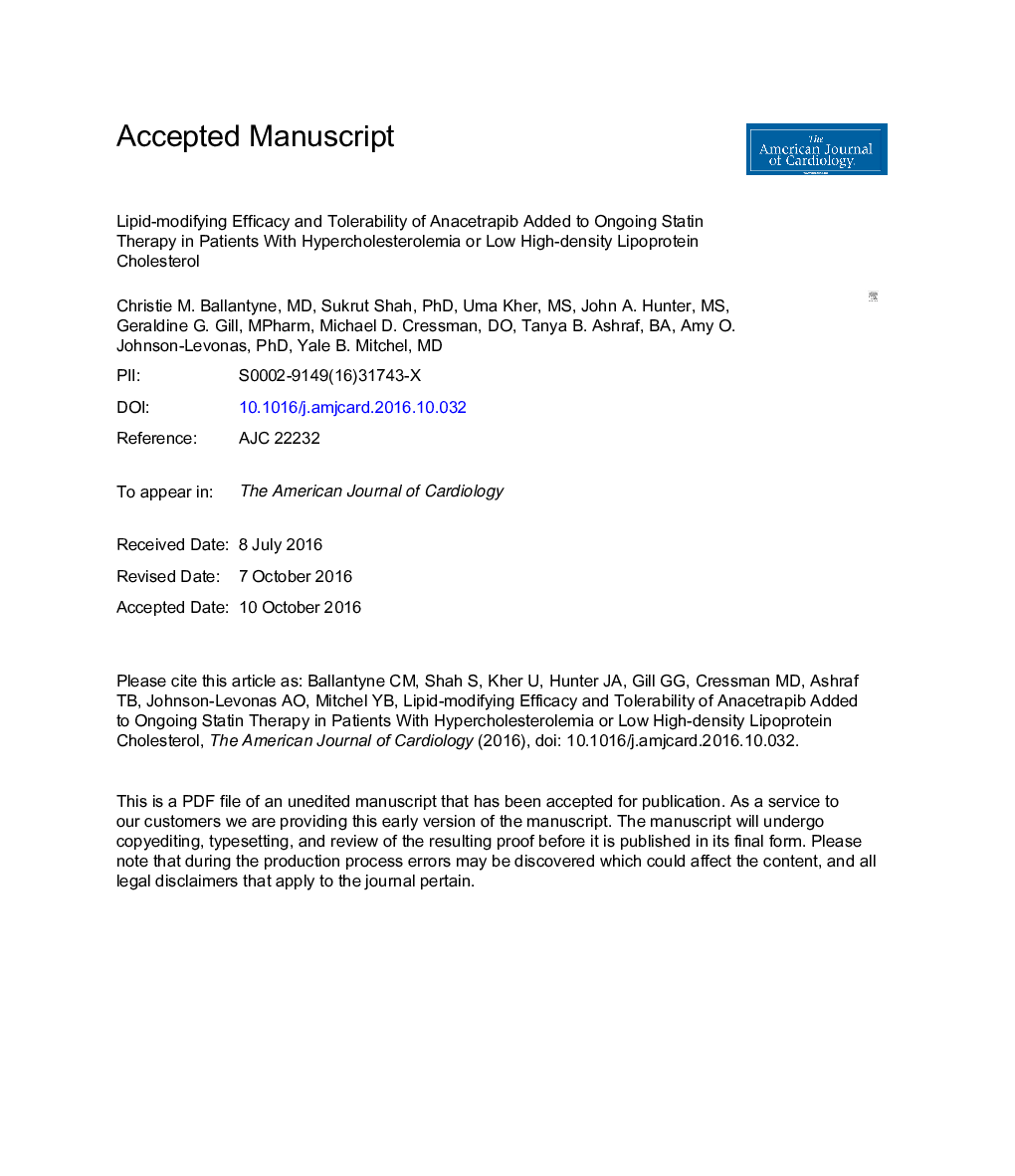| کد مقاله | کد نشریه | سال انتشار | مقاله انگلیسی | نسخه تمام متن |
|---|---|---|---|---|
| 5595361 | 1572095 | 2017 | 29 صفحه PDF | دانلود رایگان |
عنوان انگلیسی مقاله ISI
Lipid-Modifying Efficacy and Tolerability of Anacetrapib Added to Ongoing Statin Therapy in Patients with Hypercholesterolemia or Low High-Density Lipoprotein Cholesterol
ترجمه فارسی عنوان
اثربخشی اصلاح کننده های چربی و تحمل آنات سپریب به درمان با استاتین در حال حاضر در بیماران مبتلا به هیپرکلسترولمی یا کم چرب کلسترول لیپوپروتئین با شدت بالا
دانلود مقاله + سفارش ترجمه
دانلود مقاله ISI انگلیسی
رایگان برای ایرانیان
موضوعات مرتبط
علوم پزشکی و سلامت
پزشکی و دندانپزشکی
کاردیولوژی و پزشکی قلب و عروق
چکیده انگلیسی
To assess the effects of anacetrapib added to statin ± other lipid-modifying therapies in patients with hypercholesterolemia and not at their low-density lipoprotein cholesterol (LDL-C) goal (as per National Cholesterol Education Program Adult Treatment Panel III [NCEP ATP III] guidelines) and in those with low high-density lipoprotein cholesterol (HDL-C). Patients on a stable dose of moderate/high-intensity statin ± other lipid-modifying therapies with LDL-C â¥70, â¥100, â¥130, or â¥160 mg/dl for very high, high, moderate, and low coronary heart disease risk, respectively, or at LDL-C goal with HDL-C â¤40 mg/dl, were randomized 1:1:1, stratified by background therapy use, to anacetrapib 100 mg (n = 153), anacetrapib 25 mg (n = 152), or placebo (n = 154) for 24 weeks, followed by a 12-week off-drug reversal phase. The primary end points were percent change from baseline in LDL-C (beta-quantification method) and HDL-C, as well as the safety profile of anacetrapib. Both doses of anacetrapib reduced LDL-C, non-HDL-C, apolipoprotein (Apo) B, and lipoprotein a and increased HDL-C and Apo AI versus placebo (p <0.001 for all). There were no meaningful differences between the anacetrapib 25 mg, 100 mg, and placebo groups in the proportions of discontinuations due to drug-related adverse events (0.7%, 1.3% vs 1.3%) or in abnormalities in liver enzymes (0%, 0% vs 0.7%), creatine kinase elevations overall (0%, 0.7% vs 0%) or with muscle symptoms (none seen), blood pressure, electrolytes, or adjudicated cardiovascular events (0.7%, 0.7% vs 1.3%). In conclusion, treatment with anacetrapib resulted in substantial reductions in LDL-C and increases in HDL-C and was generally well tolerated.
ناشر
Database: Elsevier - ScienceDirect (ساینس دایرکت)
Journal: The American Journal of Cardiology - Volume 119, Issue 3, 1 February 2017, Pages 388-396
Journal: The American Journal of Cardiology - Volume 119, Issue 3, 1 February 2017, Pages 388-396
نویسندگان
Christie M. MD, Sukrut PhD, Uma MS, John A. MS, Geraldine G. MPharm, Michael D. DO, Tanya B. BA, Amy O. PhD, Yale B. MD,
